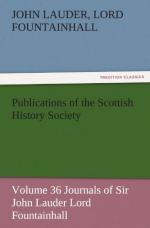[563] Mede, Joseph, B.D., 1586-1638.
[564] Twisse, Wm., D.D., 1575-1646.
[565] On the margin:
’Purchas in his Pilgrimage in Mexico reports
this
storie
also.’
[566]_ i.e._ imitator.
The ground of this conjecture is from some records found in the city of Mexico of their kingdome and its foundation, bearing that their ancestors about 400 years ago onlie (who then dwelt far north) ware called out of that countrie by their God which they called Witzill Putzill, in effect, the Devil, to go to a far country (this was to Mexico), far more fruitfull and pleasant than their oune, which he should show them, and wheirof he did give them marks and that he should go before them. And that accordingly they sett on for the journey, and that their god went before them in ane ark, and that they had many stations and marches, and that they ware 40 years by the way, and that at last they came to the promised land, and that they know it by the marks their god had given them of it. All this in manifest imitation of God his bringing the children of Israel out of Egypt.
Its reported that the State of Scotland looking ut for a suitable match for James the 2d, then King, sent over to the Duc of Gelderland (who had 3 daughters) some of the nobility and some bischops for the clergy to demand any of the 3 they should judge most sutable for the King. The Duc was content on of the Bischops [it was the Bischop of Rosse][567]—should sie them and feill them all 3 naked to discern theirby which of them was strongest and wholesomest like. His report was in favors of the youngest: his reason was, Est enim bene crurata culata cunnata aptaque ad procreandos nobis generosos principes.[568]
[567] Interlined.
[568] The Bishop of Dunkeld
(not Ross) was one of three commissioners
sent
to choose a bride for the king, first to the Court
of France.
Mary
of Gueldres was an only daughter-Tytler, Hist.
iii. 209.
The
story is probably apocryphal. But in Russia, when
the Tsars
were
married, the inspection of the candidates was an established
custom
and ceremony for two centuries after the marriage of
James
II.
A French gentleman being inamoured with a damoiselle of Lyons, going in to Italie to travell she gets notice that he had tane huge conceit of a Venetian, and that he was about to marrie hir. She writs a letter in a large sheit wheirin was nothing written but Lamasabachthani, withall a false diamond. He receaving it know not what to make of it, went to a jeweller to try the stone, who discovered it to be false tho it had ane excellent luster. After many tossing thoughts he fell upon the knack of it, videlicet, that it was a heiroglyphick diamant faux, and that it behoved to be read thus, Tell, false lover, why hast thou forsaken me.
* * * * * [569]




